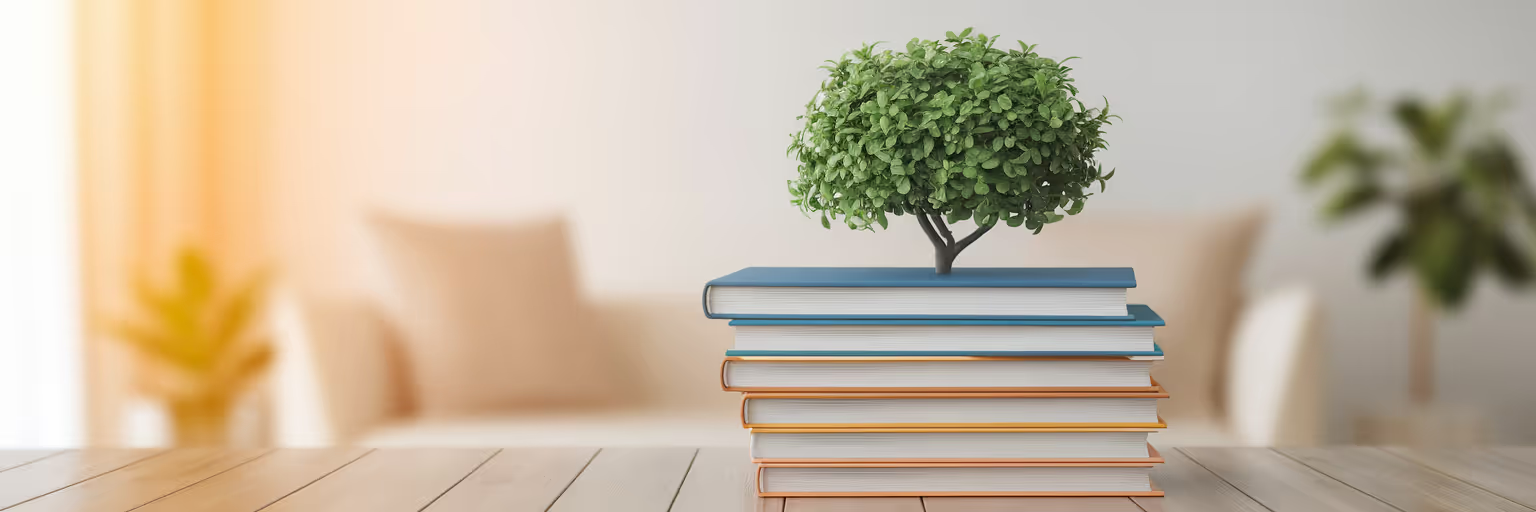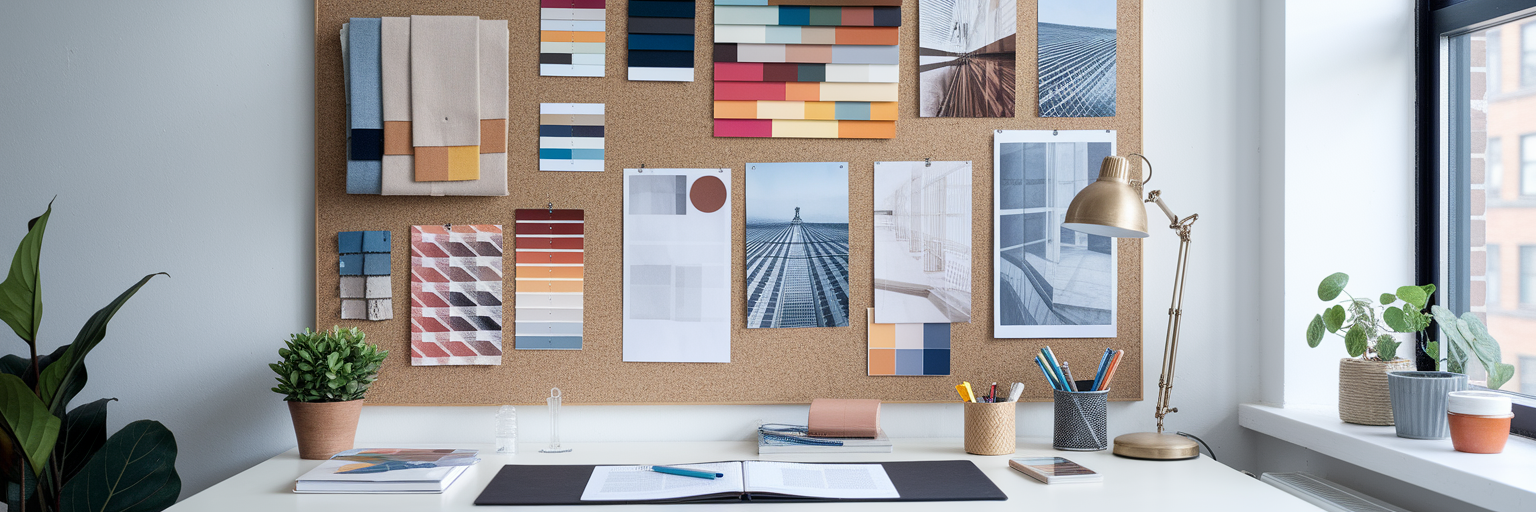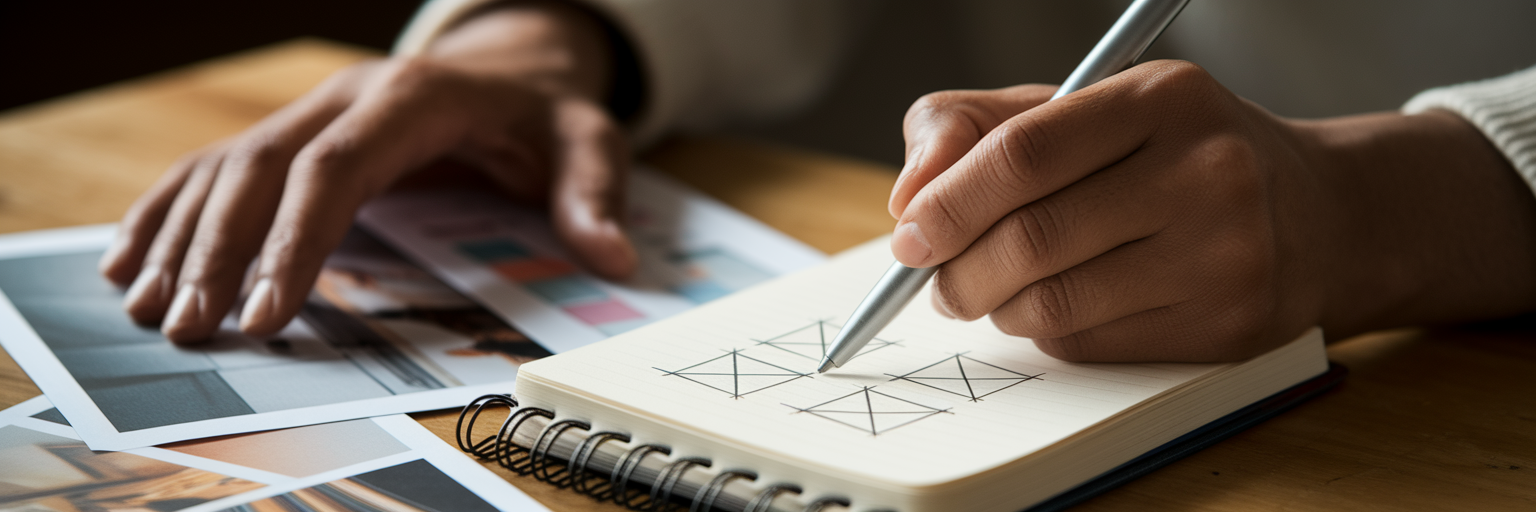A Practical Guide to Daily Design Inspiration
Learn how to build a sustainable daily design inspiration habit that fuels creativity without causing burnout. Discover practical tips for a better workflow.
November 29, 2025

Ivan S
Founder @bookmarkify

Learn how to build a sustainable daily design inspiration habit that fuels creativity without causing burnout. Discover practical tips for a better workflow.
November 29, 2025

Ivan S
Founder @bookmarkify

For modern designers, the rise of platforms like Dribbble, Pinterest, and Instagram in the early 2010s created a constant stream of visual content. What started as a source of daily design inspiration quickly became a digital firehose, creating immense pressure to innovate. If you've ever found yourself scrolling for hours only to feel more stuck than when you started, you're not alone. This is inspiration fatigue, a state where the hunt for ideas leads to creative paralysis instead of a breakthrough.
This feeling of being overwhelmed is a universal challenge. The endless feed can make your own ideas feel inadequate before they even have a chance to form. The solution isn't to unplug completely but to shift from passive, aimless browsing to an intentional, structured habit. A curated approach is the key to avoiding creative burnout and turning digital noise into a reliable professional tool that fuels your work rather than drains your energy.
We've all been there. You open a new tab to find a quick reference for a button style and, an hour later, you're deep in a rabbit hole of unrelated visuals, your original goal completely forgotten. This common experience highlights the fine line between gathering useful ideas and succumbing to information overload. The constant exposure to polished, finished work can create a subtle pressure to be perfect, which often stifles the messy, experimental process where true creativity happens.
The problem isn't the inspiration itself but our unstructured consumption of it. When we browse without a clear purpose, we invite distraction and comparison. This reactive approach can leave you feeling drained and less confident in your own creative instincts. The key is to move from a mindset of passive consumption to one of active, intentional curation. By building a system, you transform inspiration from a potential source of anxiety into a dependable asset for your creative toolkit.

Adopting a structured approach to inspiration isn't about limiting your creativity; it's about channeling it effectively. When you intentionally seek out and organize ideas, you build a powerful mental resource that pays dividends in your daily work. As sources like UX Planet emphasize, consistent routines are essential for nurturing creativity and preventing stagnation in the design field.
Picture your brain building a library of solutions you can draw from later. A curated daily habit of reviewing high-quality work exposes you to diverse problem-solving pathways. When you hit a wall on a project, you're no longer starting from scratch. Instead, you can access this internal collection of layouts, color palettes, and interactions to find a new angle, helping you break free from tired, default solutions.
Your personal style isn't found in a vacuum. It's developed by analyzing what resonates with you in the work of others. By consistently observing and saving examples, you start to notice patterns in your preferences. Do you gravitate toward minimalist typography, bold color combinations, or intricate illustrations? This process of conscious curation helps you articulate your own aesthetic and apply it with more confidence and intention.
The design world moves fast. A daily inspiration habit is a form of micro-learning that keeps you current with emerging trends, tools, and techniques without requiring a massive time commitment. It integrates professional development into your workflow, making continuous growth feel effortless. To explore more ways to improve your creative process, you can find helpful articles on our blog.
The secret to a healthy relationship with inspiration is building a repeatable design inspiration workflow. Instead of relying on willpower to resist the endless scroll, create a system that does the heavy lifting for you. This is about being intentional, efficient, and organized.
First, curate your sources. Unfollow the noise and choose a small, high-quality list of inputs. Think quality over quantity. This could be a mix of a few key designers on Behance, specific industry newsletters, or even non-design sources like online art museum archives to find unique, curated design ideas. The goal is to create a feed that inspires, not overwhelms.
Next, practice time-blocking. Set a strict 15-minute timer for your inspiration session each day. This simple constraint forces you to be focused and prevents your quick check-in from derailing your entire morning. Treat it like a focused warm-up exercise before you begin your main creative work.
Finally, and most importantly, create a central hub to save and categorize what you find. This is where a tool like Bookmarkify becomes essential. It ends the chaos of scattered browser bookmarks, desktop screenshots, and platform-specific "likes." With a dedicated hub, you can build a personal, searchable library of ideas, complete with tags and notes, ready for you whenever you need them.
| Action | The Scattered Method (The Problem) | The Systemized Method (The Solution) |
|---|---|---|
| Finding Sources | Endless, random scrolling on multiple platforms | Following a small, curated list of high-quality sources |
| Saving Ideas | Scattered across screenshots, browser tabs, and platform 'likes' | Centralized in one organized, searchable hub like Bookmarkify |
| Retrieving Ideas | Frantically searching multiple locations for 'that one thing' | Quickly finding relevant examples with tags and notes |

Collecting inspiration is only half the battle. To truly understand how to stay creatively motivated, you must shift from passive consumption to active creation. An organized library of ideas is useless if it just sits there gathering digital dust. The real value comes from interacting with what you've saved.
Start by deconstructing your saved items. When you find a design you love, don't just save it—analyze it. Ask yourself critical questions: What specific principle makes this layout feel balanced? How does this color choice create a specific mood? Why is this user flow so intuitive? This analytical exercise trains your design eye and deepens your understanding of the craft.
Next, turn analysis into action with a quick "remix and recreate" exercise. As publications like Smashing Magazine have long advocated, designing something every day builds creative muscle. Try this simple routine:
That last step is crucial. By annotating your saved items in a tool like Bookmarkify with notes like "love this user flow for checkout" or "great example of accessible typography," you transform your collection from a passive gallery into an actionable knowledge base. This practice makes it easy to find and organize ideas that you can immediately apply to your projects.
Building a healthy creative routine for designers is not about finding more inspiration; it's about engaging with it more intelligently. The goal is to create a sustainable system that fuels your creativity without causing burnout or derailing your productivity. By being intentional, you can ensure inspiration remains a powerful starting point, not a distracting dead end.
Let's recap the strategy: be deliberate with your sources, time-box your consumption, centralize your collection in an organized hub, and actively engage with what you save. This balanced approach transforms a potential source of stress into a reliable and energizing part of your professional life. It puts you back in control, allowing you to draw strength from the work of others without losing sight of your own unique voice.
Ready to stop scrolling and start creating? Take the first step toward building your personal inspiration hub today. Explore our plans and see how Bookmarkify can help you organize your ideas and reclaim your creative focus.